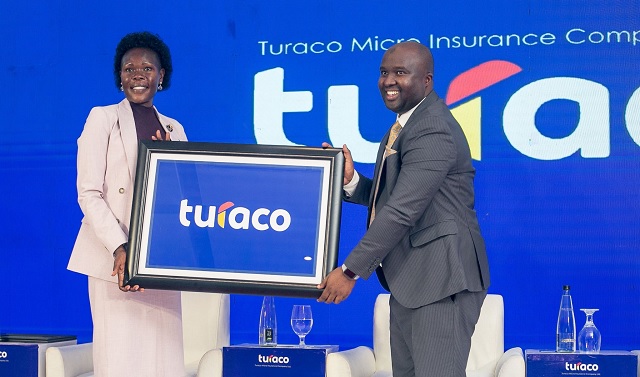
Experts emphasize the importance of building trust and financial literacy to attract more customers
Kampala, Uganda | ISAAC KHISA | More than two decades ago, micro-insurance in sub-Saharan Africa bore the weight of social responsibility, grappling with a modest customer base and low premiums that rendered claims both unstable and unpredictable.
Today, the insurtech revolution is wielding its magic wand, turning micro-insurance into a thriving domain. Kenyan-based Turaco Microinsurance Company stands at the forefront, rapidly expanding across sub-Saharan Africa.
In just four years since its inception in Nairobi, Turaco has successfully insured over 1.3 million individuals in Uganda, Kenya, Nigeria, and Ghana. Partnerships with key players like Airtel, Prudential Assurance Company, M-Kopa, and One Acre Fund, all harnessed through information technology (IT), underscore Turaco’s transformative journey.
In Uganda, the insurance firm has partnered with Airtel and Prudential Assurance to roll out a low-cost hospital cash insurance product with a funeral benefit named, Hospital Sente, accessible to the telecom’s 13 million customers.
And, for a monthly premium of Shs1,000 (USD 0.26), customers receive a hospital cash pay-out of Shs 40,000 (USD 10) per night of hospitalization and a funeral plan of Shs1 million (USD 260) under the Silver Plan.
Likewise, a Shs 3,000 (USD 7.5) monthly premium provides customers with a hospital cash pay-out of Shs 60,000 (USD 15) per night and a funeral benefit of Shs 2 million (USD 520) under the Gold plan. For a monthly premium of Shs 5,000 (USD 1.3), customers get a hospital cash pay-out of Shs 100,000 (USD 26) per night of admission and a funeral benefit of Shs 4 million (USD 1,050) in the event of death under a Platinum plan.
Turaco’s reliance on IT isn’t just a strategic choice but a game-changer, enabling the design of white-labeled insurance products that safeguard individuals against a spectrum of risks—medical, life, asset, and vehicle insurance. The ease with which customers can sign up and pay for insurance services, seamlessly integrated with other purchases, illustrates the profound impact of technology on reshaping the microinsurance landscape.
Protazio Sande, a director in charge of research at the Insurance Regulatory Authority of Uganda (IRAU) told The Independent in an interview that digitalisation is the only option for micro-insurance companies to thrive and help boost insurance penetration in the emerging markets,especially in Sub-Saharan Africa where insurance penetration stands at about 3% – lower than the world’s average of 6.3%.
“For micro-insurance to succeed, all insurance processes have to be digital, right from policy underwriting to claims payment,” he said, adding that the majority of the population now owns mobile phones, paving the way for streamlined policy purchases, claims, and payments via mobile platforms.
Sande said micro-insurance companies’ riding on technology lowers product distribution costs and reaches out to more customers especially via mobile phones in both urban and rural areas.
This comes as the latest statistics from the GSM Association show that the number of mobile phone subscribers in Sub-Saharan Africa is expected to increase by more than 100 million new subscribers by 2025, taking the total number of subscribers to 613 million.This, the experts note, opens opportunities for insurance firms to expand their reach riding on mobile digital platforms.
Ted Pantone, the CEO and co-founder of Turaco Microinsurance Company told Incafrica that the company ensures that the premiums are affordable to most customers by providing insurance covering only key risks that customers face and keeping the product simple in a way that can also help reduce fraud.
He said customers also trust the companies that they partner with and are more likely to buy their insurance products through them because of the trust.
“Through these partnerships, we make it easy for customers to pay for insurance through subscription-like customer journeys. We embed the insurance premium to existing transactions that customers are already making,” he said.
“Customers can opt-in to buy insurance and then not worry about paying for it, with the premium being collected as an added fee to a loan or an automatic deduction from a wallet or account. In that way, we can mimic a subscription model among a population without credit cards or other financial tools that allow for subscriptions.”
Susan Holliday, Principal Insurance Specialist at IFC, acknowledges the growing influence of insurtech in developing countries. While the leap to digital is evident in countries like Kenya and China, Holliday points out that insurance awareness and understanding need to be addressed in many emerging markets.

The need for personal trust is paramount in the microinsurance segment, according to Holliday, especially in regions where legitimate issues of unpaid claims and broker malpractices have eroded trust.
“Shorter-term, on-demand policies are touted as beneficial in areas with informal work arrangements, offering attractive options for younger individuals, informal workers, and gig economy participants,” she said.
“Digitalization also makes it easier for both the insured and the insurer to track claims, which further boosts customer satisfaction,” Holliday says adding that the latest technologies such as Artificial Intelligence and biometric identification can be used to identify potential fraud or cases where something is awry and thus keep costs of insurance low.
She adds that unlike in mature markets where people tend to start with auto, renters, and property insurance, in developing countries the entry point for insurers is more likely to be life insurance, often linked to a loan or health insurance, especially for lower-income individuals.
How insurtech pioneers achieved success
Research by The Independent shows that insurtech companies globally are employing diverse strategies to not only attract and retain customers but also to foster their growth. The following are some examples of successful insurtech’s and how they have rolled out their products and services.
Bima: BIMA is an innovative insurance provider operating in developing and emerging markets, utilizing mobile technology to offer its services. The key innovation lies in BIMA’s proprietary tech platform, enabling quick registration and payment processes for policyholders. Users register via their mobile phones, providing basic identification details in about two minutes. Premium payments are collected by automatically deducting prepaid airtime credit, making insurance more affordable and accessible.
BIMA employs a trained agent network for distribution. These agents engage with potential policyholders, offering education on policy details, costs, and coverage levels. After purchase, customers receive confirmation SMS messages and monthly reminders of their coverage status and payment amounts.
BIMA offers various personal insurance products, including accident, life, and hospitalization coverage (with fixed payouts for each night spent in the hospital). To make a claim, policyholders contact customer support, who assist them in filing their claims. Claims are paid in cash within 72 hours of completion.
Friendsurance: Launched in 2010, Friendsurance is a pioneer of P2P insurance. Policyholders with the same insurance type form small groups, and a portion of their premiums goes into a cashback pool. If no claims are made, group members can receive up to 40% of their premiums back at the end of the year. Large claims are covered by traditional insurers.
InsPeer: Founded in 2015 in France, InsPeer allows a group of people to share deductibles when a claim is paid. Policyholders can raise their deductibles and share risks with designated groups. InsPeer covers auto, motorcycle, and homeowner’s insurance policies. Users form small groups to share the risk of filing claims, with exposure limited to €100 per participant and €1,500 across the platform. The service is free if there are no claims, with a 10% fee on insurer-paid claims.
Guevara: Based in the UK, Guevara offers auto insurance policyholders the option to join groups, splitting premiums into individual group pools and a collective pot. Claims are paid from the group pools until exhausted, then from the collective pot. Peer pressure is used to encourage responsible behavior and keep claims low. Leftover funds in the protection pool carry over to the next year.
Lemonade: This is a New York-based insurer. Here premiums go into a claims pool, with a fixed fee deducted for reinsurance and expenses. Any surplus funds are returned to policyholders or donated to charities of their choice. Lemonade uses AI apps for policy offers and factors in various risk mitigation factors to calculate individual premiums
 The Independent Uganda: You get the Truth we Pay the Price
The Independent Uganda: You get the Truth we Pay the Price


